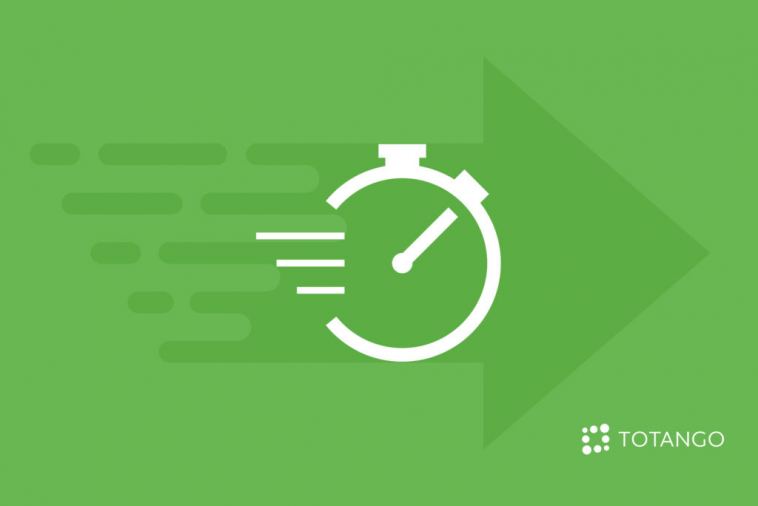- Like
- SHARE
- Digg
- Del
- Tumblr
- VKontakte
- Flattr
- Buffer
- Love This
- Save
- Odnoklassniki
- Meneame
- Blogger
- Amazon
- Yahoo Mail
- Gmail
- AOL
- Newsvine
- HackerNews
- Evernote
- MySpace
- Mail.ru
- Viadeo
- Line
- Comments
- Yummly
- SMS
- Viber
- Telegram
- JOIN
- Skype
- Facebook Messenger
- Kakao
- LiveJournal
- Yammer
- Edgar
- Fintel
- Mix
- Instapaper
- Copy Link
Customer retention is critical to success in today’s customer-centric economy. Onboarding sets the stage for customer retention by beginning a positive long-term relationship between you and your customer. For SaaS companies especially, the speed and ease with which your customers can progress through new user onboarding will act as the first indicators of how smooth their use of your product will be going forward. The more streamlined the process, the more positive the experience will be—and the more motivated your customers will be to stick around for the long run.
There are four ways to speed up the process of onboarding and make sure your customers have a gratifying, successful experience. They are:
- Use Customer Goals and Objectives to Personalize Onboarding
- Reduce Friction and Other Engagement Barriers
- Right Value, Right Time
- Track Customer Progress and Optimize Your Onboarding Process
Paying close attention to these four things during onboarding can be the difference between a stalled onboarding process and a long and mutually rewarding customer relationship.
What Difference Does a Fast Onboarding Process Make?
Improving your onboarding process can seem like a low priority when you have a long to-do list and a lot of different targets to hit. Onboarding, however, is more than just an important opportunity to create a first impression. An efficient, optimized SaaS onboarding process can:
- Increase customer engagement by encouraging product usage and/or license utilization.
- Prevent churn related to overly complicated setup, poor customer support, and other negative onboarding experiences.
- Boost retention rates by demonstrating value early—that first impression can play a major role in a customer’s decision later on to leave or to stay.
- Improve brand image by motivating happily onboarded customers to spread the word about the value and experience you are offering.
- Reduce costs related to churn, acquiring new leads, and addressing elevations during onboarding.
- Increase revenue by inspiring customers not only to stay but to potentially increase their spending down the line.
The benefits of a fast, simple onboarding process are myriad. Maximizing these benefits means reviewing and revising your onboarding strategy regularly to ensure an optimal experience.
How SaaS Enterprises Can Streamline New Customer Onboarding
Like a good game tutorial, your new customer onboarding process should get your customers excited to begin using your product. It should provide value immediately, putting customer success tools at their fingertips from the moment they log into their account.
The following four methods can optimize your new customer onboarding experience and set your customers up for long-term success with minimal time and effort.
1. Use Customer Goals and Objectives to Personalize Onboarding
During onboarding, your customers will see their first real-life demonstration of how effectively your software can help ease pain points and support their goals. While your new customer onboarding process will be the same regardless of the customer, the way your customer implements your product will differ from customer to customer.
Before implementation begins, collaborate with your customer to discuss milestones and priorities. Record these goals and associated action plans in a shared portal so that you and your customer can document their progress toward important objectives. Highlighting these early in onboarding improves your time-to-value ratio and helps your customers feel more understood and valued.
Example: Healthcare Technology Company A is onboarding a new hospital. Healthcare Company A will need to identify the hospital’s timeline for rolling out their product, as well as who needs to be involved—including key stakeholders as well as everyday users—and will need to work with the hospital to set milestones for the use of their technology.
2. Reduce Friction and Other Engagement Barriers
An onerous onboarding process makes for poor customer engagement. If just getting set up is a chore, customers will expect the actual user experience to be just as frustrating. A negative experience makes customers less motivated to move through onboarding and on to the adoption phase.
Ensure smooth sailing by optimizing onboarding to be as simple and straightforward as possible. Make sure your team is using the latest best practices and steps for onboarding and that customers are able to move effectively through setup. Ensure your team members have what they need to respond quickly and effectively to any questions or escalations. Reevaluate your process regularly to update information, media, links, and other components as needed. Make sure, too, that what happens in onboarding aligns with the expectations set by your leadership and sales team.
Example: SaaS Company A provides an e-commerce platform designed to make it easy for new small business owners to sell their products online. They could reduce friction during the onboarding process by putting an automatic process in place to smooth the handoff from the sales to the CS team, such as by having sales gather and complete documents or forms for the CS team. This leaves the CS team fully prepared and informed about new customers.
3. Right Value, Right Time
Onboarding new customers is not just about giving them what they need to set themselves up for success. Your customers want to feel supported and valued—they want to know that you will have their back when they need you.
During new user onboarding, you can establish trust early by contacting customers at the right time and with the right value. Messages should provide customers with progress updates, mark when milestones have been met, and offer tips on what features might help the customer, to name just a few possibilities. Personalized messaging and check-ins open the door to better communication and higher engagement.
Example: New Customer B has paused midway through the onboarding process and multiple users have not logged in for several days or have not completed a milestone in the usual time period. Good onboarding practice means having next steps set up so that your CS team is never in doubt about what to do. A next step might involve assigning a task to the onboarding manager so they can investigate the issue or sending a personalized message with an offer for extra support. Utilizing a Customer Success system that can identify red flags like this and prescribe a proactive action (like sending an email) can further optimize this process.
4. Track Customer Progress and Optimize Your Onboarding Process
Onboarding is a crucial stage in the customer journey, and a successful onboarding can pave the way for a successful customer experience with your product. As a result, tracking onboarding progress is crucial. You will want to use a dashboard that integrates onboarding data and makes it easy to understand in order to track customer progress through onboarding stages, see trends during onboarding, catch bottlenecks, and show how the company is progressing against its onboarding goals. For instance, you might have a goal to make sure all customers are onboarded in a certain number of days or that a certain percentage of customers are on track for their implementation deadlines. Data collection and reporting can help you understand how your company is progressing in meeting these objectives.
Example: You have a goal to make sure all customers complete onboarding in 90 days and you have separate metrics to track the average time it takes to reach specific milestones. You notice that the second milestone’s average time has increased by ten days. You can use a segment to identify which customers are taking longer to complete the second milestone and their latest touchpoint. It looks like they haven’t received one in a while. You can now automate a message from their assigned CSM to give them the next steps via a how-to video and encourage them to schedule time if they need help.
Onboarding process optimization should become a routine event; you should gather regular feedback from both your team and customers to ensure you are continually improving your onboarding process. Proactivity is key, both for overall optimization and for resolving individual customer onboarding challenges.
Proactively Optimizing SaaS Onboarding
Though the goal may be to strive for perfection, no onboarding process is perfect for all customers at all times. Challenges will arise no matter what. What makes the difference between a good and bad onboarding experience is how well your team can predict and address issues before they become real problems.
An outcomes-based method helps you prioritize high leverage areas that allow you to deliver wins for your customers that make a difference in their business.
Utilize a Customer Success solution with an outcomes-based approach that allows your team to track their activities and goals and have an early warning system in place. With this type of system, you can identify red flags, such as a drop in license utilization, and set up automated alerts that will bring these red flags to the attention of your team members, recommend solutions, and track the impact of these actions. An outcomes-based method helps you prioritize high leverage areas that allow you to deliver wins for your customers that make a difference in their business.
New customer onboarding, at the end of the day, is more than the process of setting up a new customer with a new product. It is the first test you must pass to prove your products and services are worth your new customer’s time, energy, and resources. Having the right practices—and the right platform—in place can give you the edge to pass with flying colors.
Explore how you can speed up user onboarding with Totango’s Onboarding SuccessBLOCs. Get started for free today to help your customers realize value faster.



